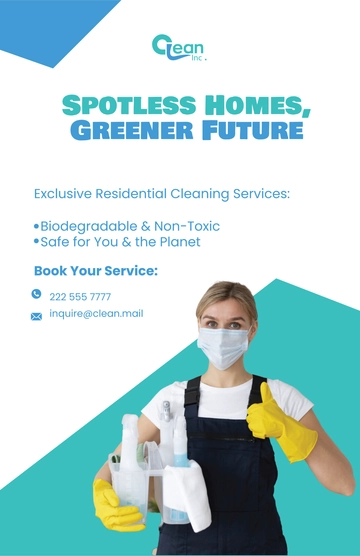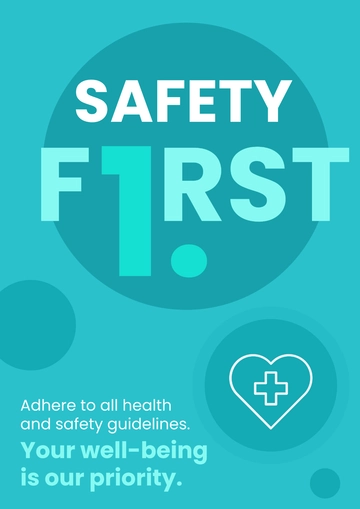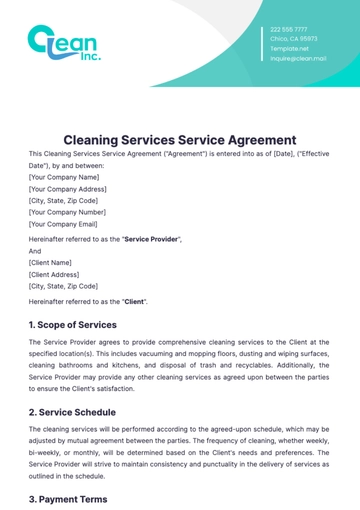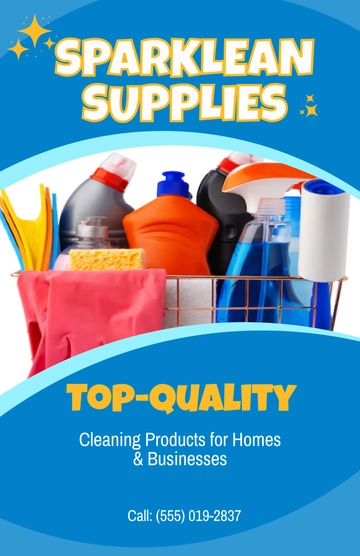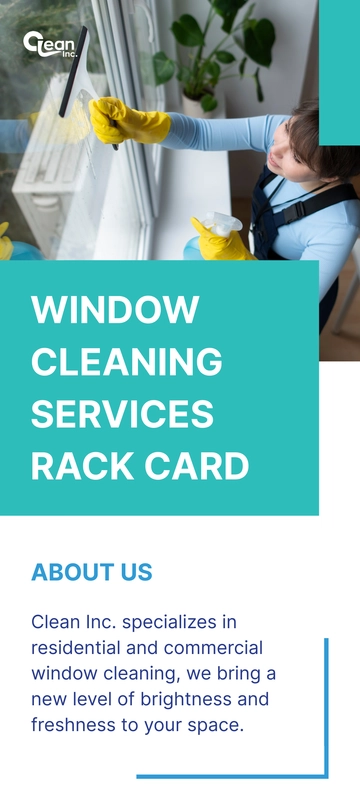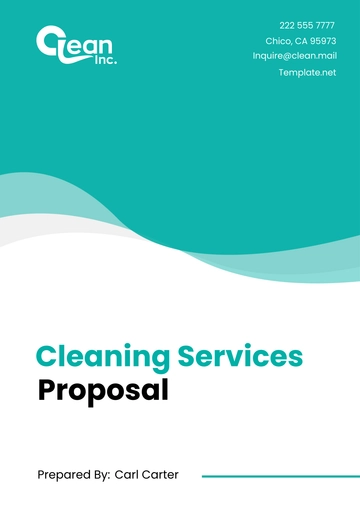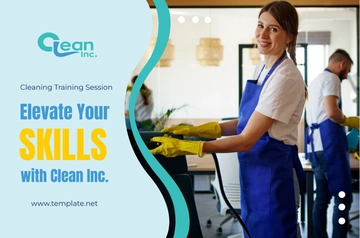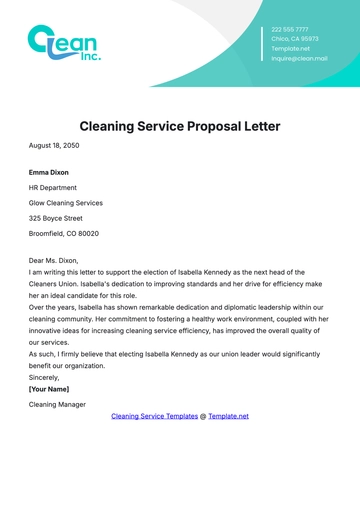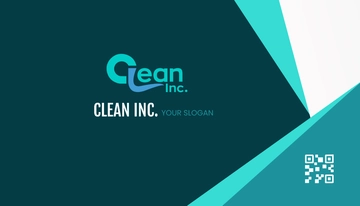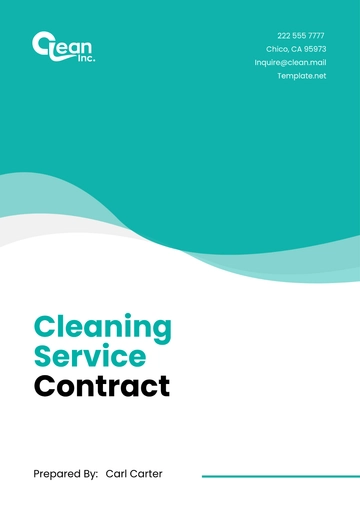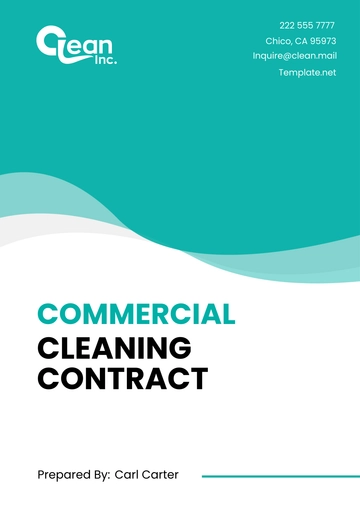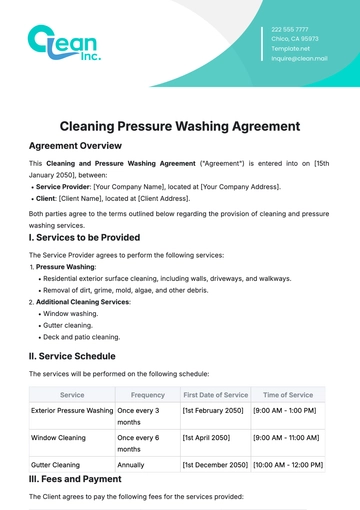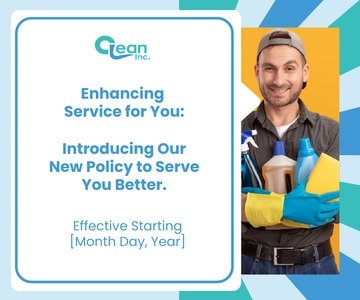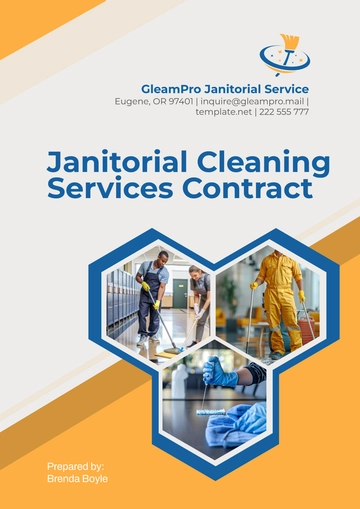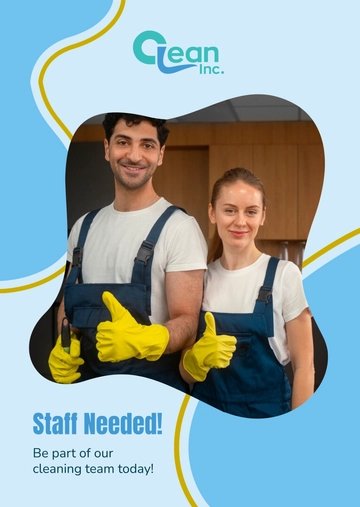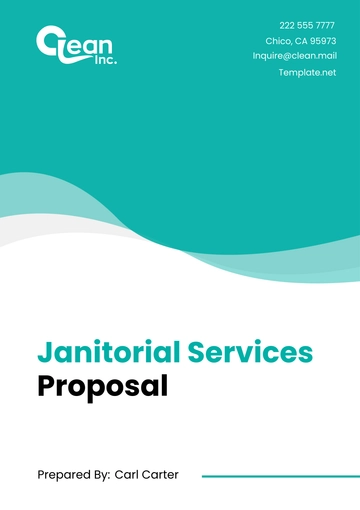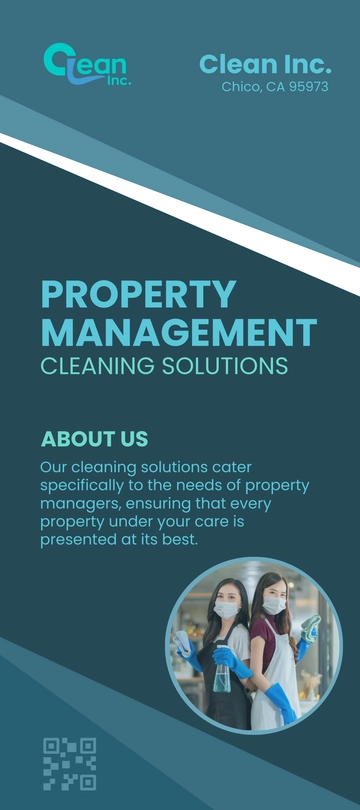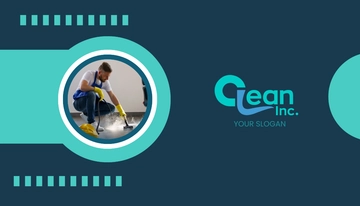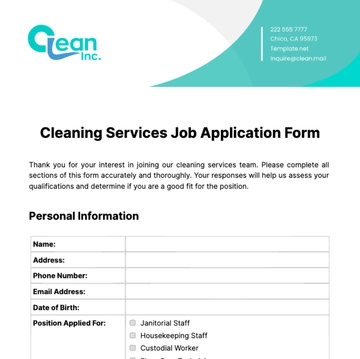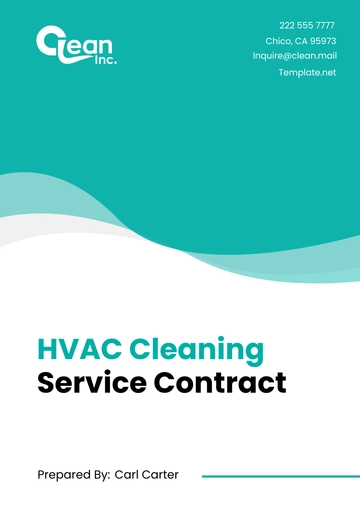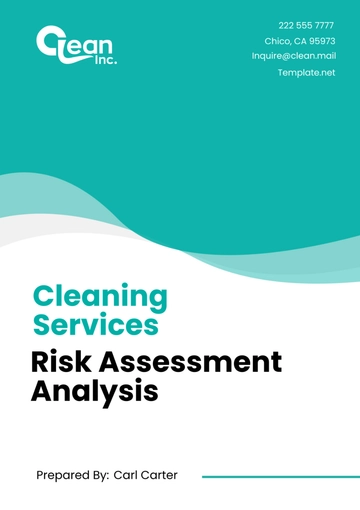Free Cleaning Services Training & Development Guide
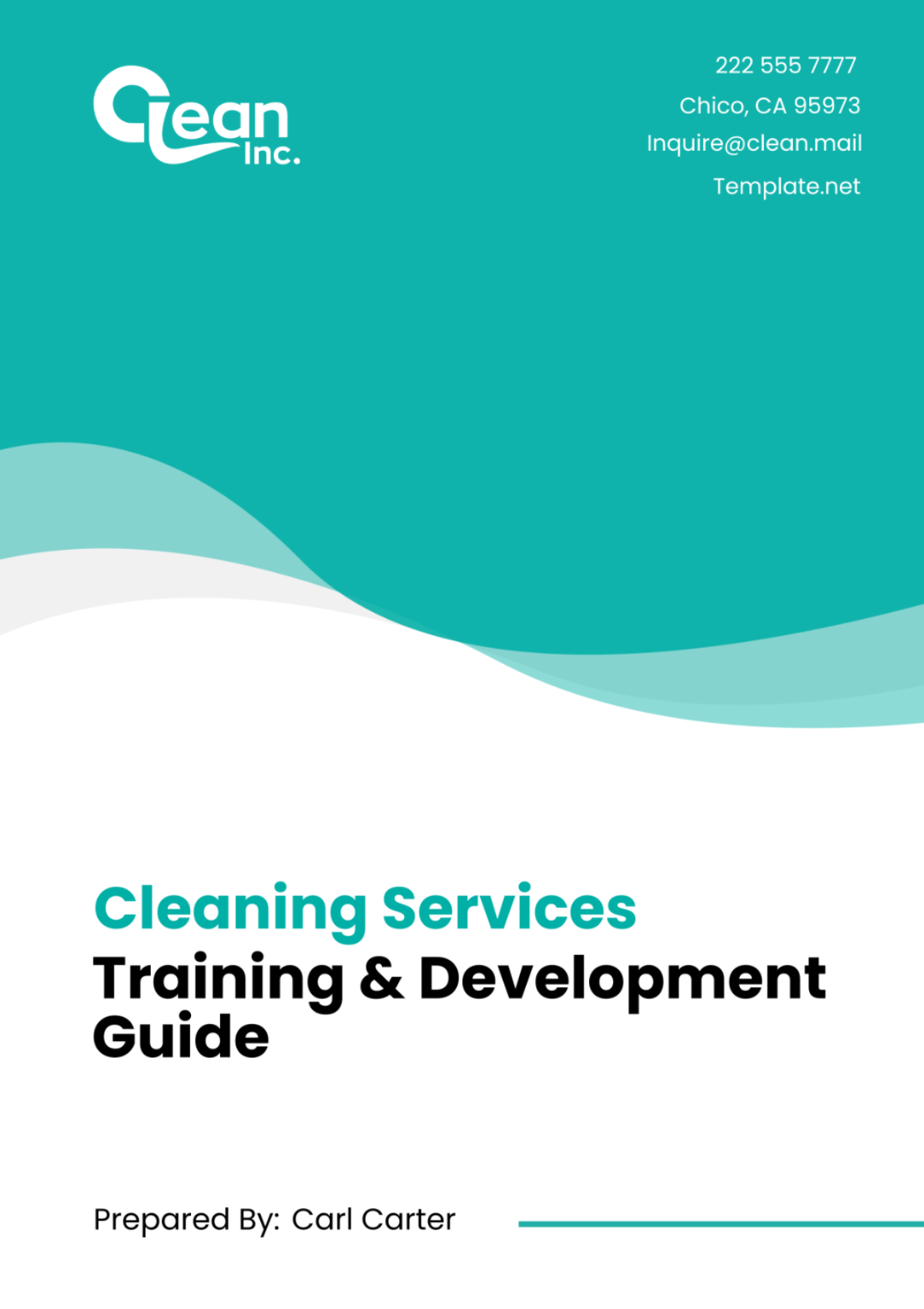
I. Introduction
This Cleaning Services Training & Development Guide is designed to equip you with the necessary knowledge and skills to excel in the cleaning services industry. By adhering to the guidelines outlined in this manual, you will contribute to maintaining high standards of cleanliness and professionalism that [Your Company Name] prides itself on.
II. Understanding Cleaning Techniques
In this section, employees will gain comprehensive knowledge of various cleaning techniques tailored to different surfaces and environments. Understanding these techniques is essential for achieving optimal cleanliness and maintaining the integrity of the surfaces being cleaned.
Surface Analysis:
Identifying different types of surfaces (e.g., wood, tile, glass, fabric) and understanding their characteristics.
Assessing surface condition to determine the appropriate cleaning method and products.
Cleaning Methods:
Wet Cleaning: Techniques for using water and cleaning solutions to remove dirt, stains, and grime from surfaces. This includes methods such as mopping, wiping, and scrubbing.
Dry Cleaning: Procedures for removing dust, debris, and surface soil without using water. Techniques may include dusting, vacuuming, and dry cloth wiping.
Specialized Cleaning: Specific techniques for addressing unique surfaces or materials, such as stainless steel, marble, delicate fabrics, or electronic devices.
Disinfection: Guidelines for disinfecting surfaces to eliminate harmful bacteria, viruses, and pathogens, including appropriate dwell times and application methods.
Product Selection and Usage:
Understanding the properties and purposes of different cleaning products (e.g., detergents, disinfectants, degreasers).
Proper dilution ratios and application techniques for maximizing product effectiveness while minimizing waste.
Considerations for selecting environmentally friendly and sustainable cleaning products.
Techniques for Specific Areas:
Kitchen Cleaning: Best practices for cleaning kitchen surfaces, appliances, and equipment to maintain hygiene and prevent food contamination.
Bathroom Cleaning: Methods for cleaning and disinfecting bathroom fixtures, surfaces, and tile grout to eliminate germs and prevent mold and mildew growth.
Flooring Care: Strategies for cleaning and maintaining various types of flooring, including hardwood, laminate, tile, and carpet, to preserve appearance and durability.
Glass and Mirror Cleaning: Techniques for streak-free cleaning of glass surfaces and mirrors using appropriate cleaners and tools.
Safety Considerations:
Ensuring safety when using cleaning chemicals and equipment, including proper ventilation, wearing protective gear, and following manufacturer instructions.
Identifying potential hazards associated with cleaning certain surfaces or materials, such as slippery floors or electrocution risks near electrical outlets.
Troubleshooting and Problem-Solving:
Recognizing common cleaning challenges and implementing effective solutions.
Handling stubborn stains, odors, or surface damage with appropriate cleaning techniques and products.
III. Equipment Handling and Maintenance
Equipment Identification and Familiarization:
Introduction to the different types of cleaning equipment used in our operations, including vacuum cleaners, mop buckets, scrubbers, and pressure washers.
Identification of key components and functions of each piece of equipment.
Familiarization with equipment operation manuals and manufacturer guidelines.
Safe Handling Procedures:
Proper lifting techniques to prevent back strain and injury when moving heavy equipment.
Use of personal protective equipment (PPE), such as gloves and safety goggles, when handling cleaning chemicals or operating equipment.
Awareness of potential hazards associated with equipment use and precautions to mitigate risks.
Equipment Preparation and Setup:
Pre-operational checks to ensure equipment is in proper working condition before use.
Correct assembly and setup of equipment, including attaching accessories and adjusting settings as needed.
Verification of power sources and availability of necessary supplies (e.g., water, cleaning solutions) before starting tasks.
Operational Procedures:
Step-by-step instructions for operating each type of cleaning equipment effectively and safely.
Techniques for maneuvering equipment around obstacles, navigating tight spaces, and reaching difficult-to-access areas.
Monitoring equipment performance during use and addressing any issues or malfunctions promptly.
Cleaning Equipment Maintenance:
Regular cleaning and sanitization of equipment surfaces and attachments to prevent cross-contamination and buildup of dirt or debris.
Lubrication and maintenance of moving parts to ensure smooth operation and prevent premature wear.
Inspection of power cords, hoses, and other components for signs of damage or wear, with prompt repair or replacement as needed.
Storage and Organization:
Proper storage practices to protect equipment from damage and deterioration when not in use.
Segregation of clean and dirty equipment to prevent contamination.
Organization of storage areas to maximize efficiency and accessibility, with clear labeling of equipment and supplies.
Troubleshooting and Repair:
Identification of common equipment problems and troubleshooting techniques to address them.
Procedures for reporting equipment malfunctions or damage to supervisors and requesting maintenance or repairs.
Training on minor repairs or adjustments that can be performed by employees, as well as when to involve professional technicians.
Equipment Retirement and Replacement:
Recognition of signs indicating the need for equipment retirement due to age, wear, or irreparable damage.
Procedures for documenting and reporting equipment retirement, including disposal or recycling in accordance with company policies and environmental regulations.
Considerations for evaluating and selecting new equipment, including performance specifications, cost-effectiveness, and compatibility with existing systems.
IV. Safety Protocols and Procedures
Safety is paramount in our cleaning operations, and adherence to rigorous safety protocols is essential to protect the well-being of our employees, clients, and the public. In this section, employees will be trained on comprehensive safety protocols and procedures to minimize risks and ensure a safe working environment.
General Safety Guidelines:
Compliance with all relevant safety regulations, including Occupational Safety and Health Administration (OSHA) standards and local regulations.
Understanding of emergency procedures, including evacuation routes, assembly points, and procedures for reporting emergencies.
Personal Protective Equipment (PPE):
Identification of appropriate PPE for various cleaning tasks, including gloves, safety goggles, face masks, and protective clothing.
Proper donning and doffing of PPE to ensure effective protection against hazards.
Regular inspection and maintenance of PPE to ensure integrity and effectiveness.
Chemical Safety:
Safe handling, storage, and use of cleaning chemicals, following manufacturer instructions and Material Safety Data Sheets (MSDS).
Dilution procedures to prevent overexposure to concentrated chemicals and minimize the risk of chemical burns or respiratory irritation.
Implementation of chemical spill response protocols, including containment, neutralization, and cleanup procedures.
Equipment Safety:
Inspection of cleaning equipment before each use to ensure proper functioning and identify any defects or hazards.
Safe operation of powered equipment, including adherence to operating instructions, safety guards, and warning labels.
Lockout/tagout procedures for servicing or repairing equipment to prevent accidental startup or release of stored energy.
Slips, Trips, and Falls Prevention:
Identification and mitigation of slip, trip, and fall hazards in the work environment, such as wet floors, uneven surfaces, or cluttered walkways.
Use of warning signs, barriers, and non-slip mats to alert employees and visitors to potential hazards.
Proper housekeeping practices to maintain clean, organized work areas and minimize tripping hazards.
Manual Handling and Ergonomics:
Adoption of proper lifting techniques to prevent back injuries and musculoskeletal strains when handling heavy objects or equipment.
Use of mechanical aids, such as dollies, carts, or lifting belts, to reduce the risk of overexertion and injury.
Ergonomic workstation setup and posture awareness to minimize the risk of repetitive strain injuries during cleaning tasks.
Electrical Safety:
Inspection of electrical cords, plugs, and outlets for damage or wear before use, with immediate replacement of defective equipment.
Avoidance of overloading electrical circuits and extension cords to prevent fire hazards.
Safe handling of electrical equipment around water sources to minimize the risk of electric shock.
Fire Safety:
Awareness of fire hazards in the work environment and procedures for preventing ignition sources, such as smoking in designated areas only.
Familiarity with the location of fire extinguishers, fire alarms, and emergency exits, and training on their proper use.
Participation in fire drills and evacuation exercises to ensure prompt and orderly evacuation in the event of a fire emergency.
First Aid and Emergency Response:
Training in basic first aid procedures, including wound care, CPR, and the use of automated external defibrillators (AEDs).
Access to first aid kits and emergency response supplies, with regular checks to ensure completeness and readiness.
Reporting of all workplace injuries, accidents, or near misses to supervisors or designated safety personnel for investigation and follow-up.
Safety Communication and Training:
Regular safety meetings, toolbox talks, or training sessions to reinforce safety protocols, discuss emerging hazards, and promote a culture of safety.
Provision of safety signage, labels, and posters to communicate important safety information and reminders throughout the workplace.
Encouragement of open communication and reporting of safety concerns or suggestions for improvement from all employees.
V. Health and Hygiene Practices
Maintaining cleanliness and promoting good hygiene practices are essential for safeguarding the health and well-being of our employees, clients, and the community. In this section, employees will learn comprehensive health and hygiene practices to prevent the spread of illness, maintain a sanitary work environment, and uphold our commitment to excellence in cleanliness.
Hand Hygiene:
Proper handwashing techniques, including thorough washing with soap and water for at least 20 seconds, covering all surfaces of the hands, wrists, and fingers.
Hand sanitization using alcohol-based hand sanitizers with at least 60% alcohol content when soap and water are not readily available.
Regular hand hygiene practices before and after performing cleaning tasks, handling cleaning equipment, or interacting with clients.
Personal Hygiene:
Encouragement of personal grooming practices, including regular bathing, hair washing, and wearing clean and appropriate clothing to maintain a professional appearance.
Use of personal protective equipment (PPE), such as gloves and masks, to prevent contamination and protect against exposure to pathogens during cleaning tasks.
Avoidance of behaviors that may contribute to the spread of illness, such as touching the face, sneezing or coughing without covering the mouth and nose, or coming to work while ill.
Respiratory Hygiene:
Adoption of respiratory etiquette, including covering the mouth and nose with a tissue or elbow when coughing or sneezing to prevent the spread of respiratory droplets.
Proper disposal of used tissues and immediate hand hygiene afterward to minimize the risk of contaminating surfaces or spreading germs.
Surface Disinfection:
Implementation of thorough cleaning and disinfection protocols for high-touch surfaces, such as doorknobs, light switches, countertops, and restroom fixtures, using EPA-approved disinfectants.
Adherence to recommended contact times and application methods for disinfectants to ensure effective germ kill and prevent the spread of infectious agents.
Food Safety:
Awareness of food safety principles and practices when cleaning kitchen areas or handling food-contact surfaces to prevent cross-contamination and foodborne illness.
Proper storage, handling, and disposal of perishable food items to minimize the risk of spoilage, contamination, or foodborne pathogens.
Waste Management:
Segregation of waste streams, including regular removal of garbage and recyclables to maintain a clean and sanitary work environment.
Proper disposal of hazardous waste, such as cleaning chemicals, sharps, or biohazardous materials, in accordance with regulatory requirements and company policies.
Illness Reporting and Exclusion Policies:
Encouragement of employees to report any symptoms of illness, such as fever, cough, or sore throat, to their supervisors or designated health and safety personnel.
Implementation of policies for excluding ill employees from work until they are no longer contagious, in accordance with public health guidelines and recommendations.
Health Education and Promotion:
Provision of educational resources, posters, and handouts on topics related to health, hygiene, and illness prevention to reinforce key messages and promote employee awareness.
Encouragement of healthy lifestyle habits, such as staying hydrated, getting adequate rest, eating nutritious foods, and engaging in regular physical activity, to support overall well-being.
VI. Legal and Regulatory Compliance
[Your Company] is committed to upholding all relevant laws, regulations, and industry standards governing our cleaning operations. Below are the key legal and regulatory requirements that our company adheres to:
Occupational Safety and Health Administration (OSHA):
OSHA sets and enforces workplace safety and health regulations to ensure safe working conditions for employees. Compliance with OSHA standards is mandatory to prevent workplace accidents, injuries, and illnesses.
Environmental Protection Agency (EPA):
The EPA regulates environmental laws and policies aimed at protecting human health and the environment. Compliance with EPA regulations is essential to prevent pollution, ensure proper waste management, and promote environmental sustainability in our cleaning practices.
Fair Labor Standards Act (FLSA):
The FLSA establishes minimum wage, overtime pay, recordkeeping, and child labor standards for employees in the United States. Compliance with FLSA regulations is crucial to ensure fair compensation and working conditions for our employees.
Americans with Disabilities Act (ADA):
The ADA prohibits discrimination against individuals with disabilities in all areas of public life, including employment, transportation, and public accommodations. Compliance with ADA requirements is necessary to ensure equal opportunities and access for individuals with disabilities in our workplace.
Worker's Compensation Laws:
Worker's compensation laws provide benefits to employees who suffer work-related injuries or illnesses. Compliance with worker's compensation regulations is mandatory to provide appropriate medical care and compensation to injured employees and their families.
Hazard Communication Standard (HazCom):
HazCom requires employers to provide information and training to employees about hazardous chemicals in the workplace. Compliance with HazCom standards ensures that employees are aware of the hazards associated with cleaning chemicals and how to safely handle and use them.
Cleaning Industry Regulations:
Various state and local regulations may govern the cleaning industry, including licensing requirements, business permits, and sanitation standards. Compliance with these regulations is necessary to operate legally and maintain the integrity and professionalism of our cleaning services.
Data Privacy Laws:
Data privacy laws regulate the collection, storage, and use of personal information of customers and employees. Compliance with data privacy regulations ensures the protection of sensitive information and maintains trust and confidentiality in our business operations.
Insurance Requirements:
Insurance requirements may include liability insurance, worker's compensation insurance, and property insurance to protect against potential risks and liabilities associated with our cleaning services. Compliance with insurance requirements provides financial protection and peace of mind for our company and clients.
Contractual Obligations:
Compliance with contractual obligations outlined in agreements with clients, vendors, and subcontractors is essential to uphold legal and ethical commitments and maintain positive business relationships.
VII. Conclusion
In conclusion, the [Your Company] Cleaning Services Training & Development Guide serves as a comprehensive resource for our employees to enhance their skills, uphold safety standards, and deliver exceptional cleaning services. By incorporating the knowledge and practices outlined in this guide into their daily work routines, our employees contribute to maintaining a safe, healthy, and environmentally sustainable work environment while providing top-quality service to our clients. We remain committed to continuous learning, improvement, and compliance with legal and regulatory requirements to ensure the success and professionalism of our cleaning operations.
- 100% Customizable, free editor
- Access 1 Million+ Templates, photo’s & graphics
- Download or share as a template
- Click and replace photos, graphics, text, backgrounds
- Resize, crop, AI write & more
- Access advanced editor
Empower your cleaning services team with Template.net's Training & Development Guide Template. Easily editable in our AI Editor Tool, this customizable template provides a comprehensive roadmap for skill enhancement and career advancement. From safety protocols to specialized techniques, streamline training initiatives and foster continuous improvement. Elevate your workforce capabilities effortlessly with Template.net!
You may also like
- Cleaning
- Cleaning Brochure
- Cleaning Checklist Service
- Cleaning Estimate
- Cleaning Flyer
- Cleaning Invoice
- Cleaning Proposal
- Cleaning Quotation
- Cleaning Services Receipt
- Cleaning Services Roster
- Cleaning Schedule
- Cleaning Services Survey
- Cleaning Services Card
- Cleaning Services Banner
- Cleaning Services Form
- Cleaning Contract
- Cleaning Business Card
- Cleaning Services Agreement
- Cleaning Services Poster
- Cleaning Services Plan
- Cleaning Services Letterhead
- Window Cleaning
- Cleaning-Services Logo
